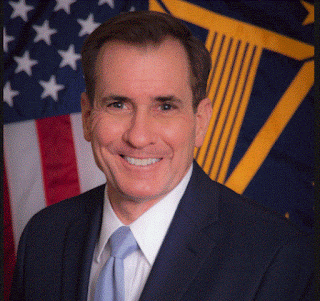Media interest
The media, both mainstream and social, has been awash with a story that NASA brought together 24 theologians to study the question of how religions would respond to the discovery of life elsewhere in the universe. Many of the articles implied that this was a recent study. It was not.
Rony Vernet
Twitter user @RonyVernet, from Brazil, sent me a link to a relevant 2014 article, which told the original story. It will be worth quoting in full.
"Latest news
CTI Receives NASA grant
The Center of Theological Inquiry (CTI) is pleased to announce that it has been awarded a grant by the NASA Astrobiology Program to convene an interdisciplinary inquiry into the societal implications of the search for life in the universe.
The project is intended to refresh and expand scholarly and public dialogue on this topic, which is of growing interest due to the discovery of thousands of extrasolar planets and the ongoing search for potentially habitable environments in our solar system and beyond. With the S1.108 million grant, CTI will oversee a resident team of visiting scholars in theology, the humanities, and social sciences, that will conduct an interdisciplinary inquiry on the societal implications of astrobiology, the study of the ongoing, evolution, distribution and future of life in the universe.
This inquiry will extend over two academic years from 2015 to 2017. It will focus on the societal implications of astrobiology's current research goals and findings, which will be studied in symposia and vidoe-linked conversations with leading scientists in the field. Applications will be welcomed from collaborative scholars who are examining the concerns raised by astrobiology for the humanities, or pursuing research on societal issues related to the evolution and future of life.
Announcing the NASA grant, CTI's Director William Storrar said "The aim of this inquiry is to foster theology's dialogue with astrobiology on its societal implications, enriched by the contribution of scholars in the humanities and social sciences. We are grateful to the NASA Astrobiology Program for making this pioneering conversation possible."
CTI is an independent academic institution for interdisciplinary research on global concerns with an international visiting scholar program in Princeton, N.J. Further information on CTI's resident program and application process can be found on the Center's website at www.ctinquiry.org. The request for proposals on this topic for the 2015-2016 academic year can be found here, with the online application window open from December 15, 2014 to January 31, 2015."
Further information
27 February 2016
An article appeared on NASA's Astrobiology Program website which announed that the CTI "...held their Winter Symposium earlier this month (February 1-3) as part of a two year inquiry into the societal implications of astrobiology made possible by funding from the NASA Astrobiology Program and the John Templeton Foundation. Frank Rosenzweig ...was one of two visiting astrobiologists collaborating with CTI's research fellows."
28 March 2016
An article appeared on the CTI website titled "Scientists in conversation at CTI." Mentioned in the article were biologist Frank Rosenzweig and chemist Michael Hect.
15 October 2016
Robin W. Lovin presented a talk titled "The Societal Implications of Astrobiology: Interdisciplinary Reflections at the Centre of Theological Inquiry in Princeton."
10 December 2019
The Rev. Dr. Andrew Davison posted an article on the CTI's website discussing theological views on astrobiology. In it Davidson states "That makes me all the more grateful to the Center of Theological Inquiry and its funders, for providing nine months across 2016 and 2017 in which to research a rather more extensive book-length treatment of astrobiology and systematic theology than has been offered up to now."
Following up the mention of the John Templeton Foundation, I came across an article on their website titled "The Astrobiological Outreach program: Increasing the Impact of a A NASA Supported Inquiry on the Societal Implications of Astrobiology," about a grant made to CTI. Grant ID 58671 for $1,734,613 was made to the CTI for the period July 2015 to June 2018.
Fact checking
Among all the media attention to the 24 theologians claim, I did come across one mainstream media item, dated 29 December 2021 by author Sophia Tulp, which bothered to check the facts as I have done.






